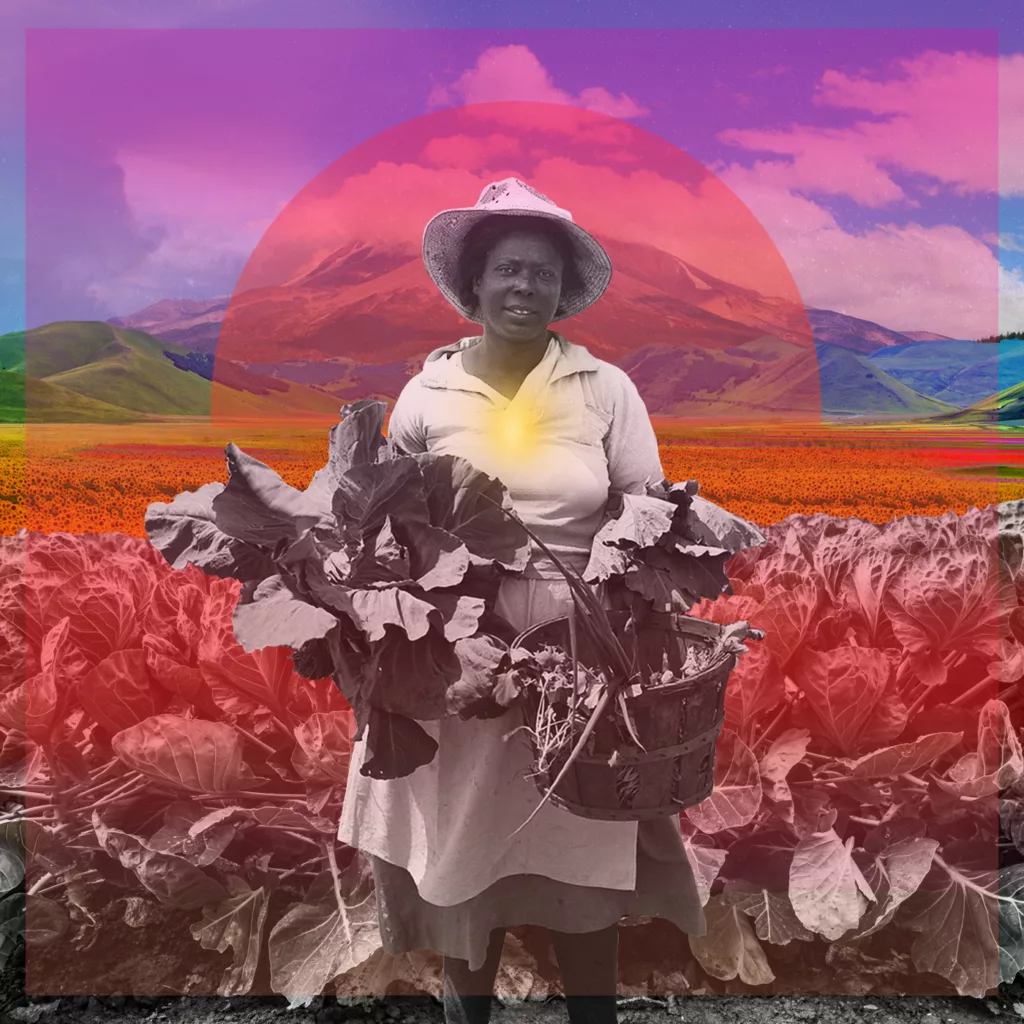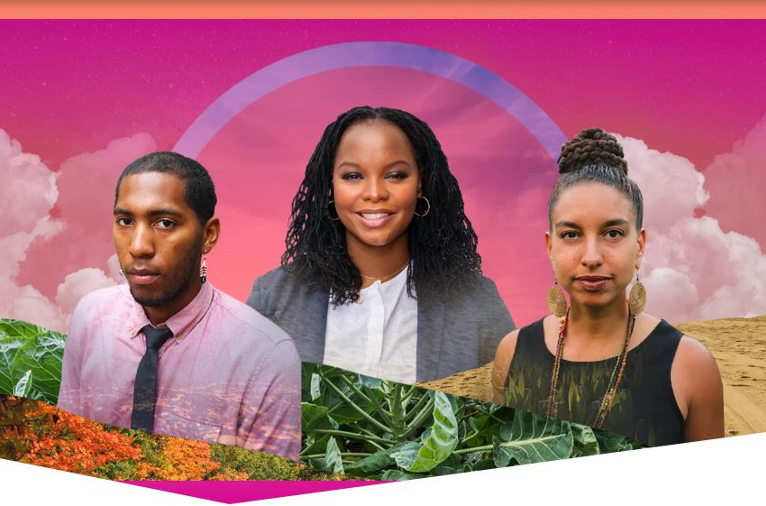Colonization, through genocide, land theft, and the imposition of private property, has dispossessed Indigenous and Black peoples of their homelands across the continents for generations.
In Indigenous cosmologies, the Land and all beings in the ecological web of homeland gave people our existence, languages, knowledge, ways of life, and understandings of our place in the universe. With that as a foundation, Indigenous people live in kinship with their homeland ecologies, holding inherent responsibility to care for those homelands. This kinship also extends to an acknowledgment of the relationships and responsibilities of other peoples to their respective homelands. This cosmology is shared by Indigenous people worldwide, across diverse cultures.
As scholars Sani Adamu Jauro and Ibrahim Yahaya explained in a 2016 academic paper reviewing Indigenous African perspectives on land, recognition of kinship with land is accompanied by traditional care and governance designed to ensure the continuance of the life-giving power of the land; from harvesting restrictions and guidance, to ways of distributing what the land offers to community members. Kenneth Tafira, Indigenous scholar at the University of South Africa, shared greater detail of what this means in an article for The Conversation:
Land is understood as embracing the ecological, cultural, cosmological, social and the spiritual… (Indigenous) African land laws debunk the idea of ownership. Instead, land is a natural endowment that can neither be bought nor sold. African land tenure is not based on ownership but on use and access. Since Africans have common rights to land, communal rights override individual rights, which are subsumed to the overall communal good. Tenure rights are built through reciprocal obligations and mutuality. Land belongs to the living, the dead and the unborn, making it inalienable. … Depriving one of land means robbing them of their personhood, being and identity – in other words their full humanity.
These principles guide practical daily life and community governance in relation to land, and they are shared by Indigenous people worldwide. They frame the contemporary movements led by colonially impacted Indigenous nations to regain rights to land, broadly termed Land Back.
Colonization, through genocide, land theft, and the imposition of private property, has dispossessed Indigenous peoples of their homelands across the continents since the birth of colonialism. The origin of private property as we understand it today lies in ancient Europe, where the Roman Empire colonized Indigenous Europeans. The Roman Empire was a key originator of the notion of “private property,” a “dominion” approach to ownership, as well as written laws, legal systems, and militias to enforce this way of believing.
As Simon Fairlie explains in “A Short History of Enclosure in Britain” for The Land, in two primary waves, including in the 18th and 19th century eras of industrialization, European villagers were dispossessed of their land through the enclosure of the commons (common land with shared usage). This was done for the benefit of elites, forcing people into low-wage labor to survive.
This can be considered a significant marker of capitalism’s origins: a system that is reliant on maintaining a lesser dependent class of wage laborers to fuel the wealth-building expansionism of the upper classes. The enclosure of lands has been followed by the enclosure of trade, as increasingly larger economic entities have isolated markets for themselves, locking others out and into dependent worker relationships.
Writing in The New Yorker, Eula Biss points out that a 1968 essay by Garrett Hardin titled “The Tragedy of the Commons” articulated the long-accepted idea that communities could not be trusted to share land and its resources. This system was exported to what would become the United States, where land was brutally taken from Indigenous peoples and racism strategically cultivated to undergird the institution of slavery.
As has been written about widely, including in the 1999 anthology by M. Annette Jaimes, The State of Native America: Genocide, Colonization, and Resistance, both the violence against the Indigenous and the practice of slavery were justified by the use of Roman Empire–based legal frameworks and the papal bulls issued by the Catholic church in the 1400s, known as the “Doctrine of Discovery.”
When the U.S. government was initially formed, only land-owning white men could vote or influence government, and as rights gradually expanded, this economic power continued to be guarded strategically for the benefit of white men for much of the nation’s history, excluding Black and Indigenous communities. While the histories of both peoples are profoundly different, they have experienced hundreds of years of systematic and strategic psychological degradation and ensured economic dependency, and have been subjugated as a relatively impoverished underclass.
As historian Roxanne Dunbar-Ortiz wrote in her 2014 text An Indigenous Peoples’ History of the United States,
Investors, monarchies, and parliamentarians devised methods to control the processes of wealth accumulation and the power that came with it. … Subjugating entire societies and civilizations, enslaving whole countries, and slaughtering people village by village did not seem too high a price to pay, nor did it appear inhumane. The systems of colonization were modern and rational, but its ideological basis was madness.
Initially, Indigenous peoples in the Americas were confined to reservation lands, typically the less fertile agricultural lands. Black folks, after the abolishment of slavery, were only able to access unwanted lands or otherwise face violence.
Throughout history, when it was discovered that Indigenous or Black peoples had unexpected natural resources on their land, they were also dispossessed. While Indigenous communities were robbed of their lands by the Bureau of Indian Affairs leasing lands to corporations, Vann R. Newkirk II, writing an extensive historical report in The Atlantic, pointed out how a million Black farmers had their lands stolen from them since the 1950s through white militant violence or eminent domain.
Leah Penniman of Soul Fire Farm says,
“There is so much land-based trauma. For us, land was the scene of the crime, as 6 million people would flee the rural agrarian South, creating a refugee crisis, as landowners were lynched for audacity of owning land.” She adds, “There was so much trauma that people were raised thinking that the way to succeed was to get as far away from the land as possible.”
Black people were also violently victimized when they managed to play by the capitalist rules of the white owning class and attain economic prosperity. The 1921 razing of the Greenwood District of Tulsa, Oklahoma, known as Black Wall Street, is one of the most prominent examples of this. According to a series by The Associated Press titled “Torn from the Land,”
“Racial violence in America is a familiar story, but the importance of land as a motive for lynchings and white mob attacks on blacks has been widely overlooked, and the resulting land losses suffered by black families have gone largely unreported.” The story concludes, “For many decades, successful blacks lived with the gnawing fear that white neighbors could at any time do something violent and take everything from them.”
And, in spite of this, Indigenous and Black peoples in the United States continue to exist, grow, heal, and thrive in incredibly powerful ways. As Stephanie Morningstar of the Northeast Farmers of Color Land Trust says,
“The resilience of our communities has continued to persist in the minds and hearts of our activists and liberators, demanding a seat at the table, and for the tables to turn by any means necessary.”

Photo courtesy of Wikipedia. Photo illustration by Mer Young
Relations to Land Today
While Indigenous peoples have experienced continuous atrocity and dispossession, many have been able to retain a connection to their original homelands and source of life, spirit, and culture.
Even so, access to a liberated relationship to land—free to practice stewardship and care, have physical access to traditional homelands, or even exercise full decision making in relation to on-reserve or reservation lands—is extremely limited. The contradictory nature of colonial law related to Indigenous people has resulted in the federal government having a trustee role over otherwise “sovereign” Indigenous nations. This has resulted in exploitation and limited Indigenous governance that is often illegal according to international law or even by the standards set by U.S. courts. The Indian Land Tenure Foundation noted that the Department of the Interior admitted to over a century of mismanagement of Indian lands and assets, and stated that “the federal government, acting as ‘trustee,’ has allowed energy, mining and other extractive industries to exploit Indian nations.”
Land theft itself occurred long after the initial reservation period. The federal General Allotment Act resulted in the dispossession of 90 million acres of Indigenous land and restricted Indigenous governance of the remaining lands. Today, Indigenous nations are working continuously to counter this and re-establish natural governance and care of land and community.
For Black folks removed from their ancestral homelands, maintaining and building connections to land has been incredibly difficult and fraught with violence. Black Americans have continuously had deep connections to land severed. Penniman explains that after the abolishment of slavery in 1865, Gen. Sherman met with Black clergyman Garrison Frazier, who shared that the deepest need that Black folks had was “homes and the ground beneath them, to plant fruit trees; to be able to tell the children, ‘these are yours.’”
According to Kyle Mays, Afro-Indigenous scholar and historian, this consistent unsteady relationship to place and land remains unresolved for those in search of home. He says, “The ideas of place, home, and land are an unresolved trauma at the core of Black belonging.” Even when Black families were able to hold on to their collective farmlands, the ongoing denial of agricultural support and subsidies has greatly undermined the strength of Black family farms and connection to generationally held land. This is transforming, however, through the power and work of people. As Leah Penniman shared,
“Land was the scene of the crime, but land was not the criminal. Now, some are returning to the land, and their souls, heritage, and wisdom.”
The structural transformations required to enact justice for Black and Indigenous peoples are connected and deep, touching the founding cosmology of settler-colonial society. This cosmology, founded on the exploitation of land and people, has proven harmful to all. As Wendell Berry wrote in his 1970 book The Hidden Wound, the “psychic wound of racism [created to maintain economic power] resulted inevitably in wounds in the land, and in the country itself.” The next story in our series explores some of the work being done by Black and Indigenous people to heal these wounds, build power together, and enact the critical transformations it will take to achieve justice and a liberated future.
This story is part of Building the Block, an original YES! series supported by a grant from the Center for Cultural Innovation’s AmbitioUS initiative, which encourages the development of burgeoning alternative economies and fresh social contracts in ways that can help artists and cultural communities achieve financial freedom. Reporting and production of this story was funded by this grant, but YES! maintains full editorial control of the content published herein. Read our editorial independence policy.
Teaser photo credit: Kyle Mays (left), Kavon Ward (center) and Leah Penniman (right). PHOTOS COURTESY OF SUBJECTS. PHOTO ILLUSTRATION BY MER YOUNG





